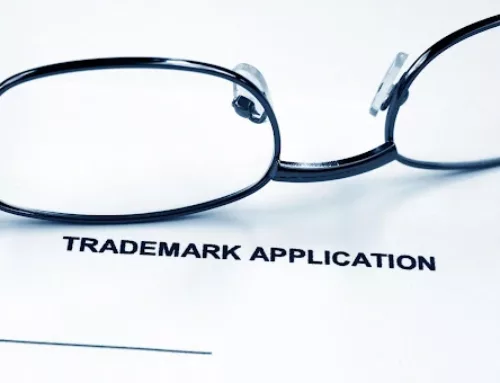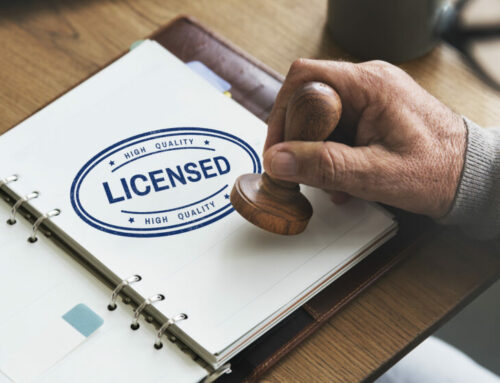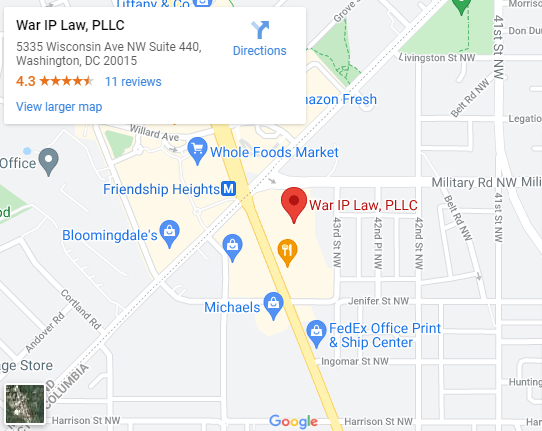After signing a Notice of Allowance, a trademark is one step closer to approval. With the Notice of Allowance, the application has undergone an extensive examination and is almost ready for trademark status. However, this notification does not guarantee full registration for the mark. Understanding your part of the process is vital to trademark acceptance. To get answers to your legal trademark and intellectual property questions, schedule a consultation with War IP Law, PLLC, by calling (202) 800-3754.
First Steps After Receiving the Notice of Allowance

The Notice of Allowance (NOA) is an official document indicating that the trademark application is in the final stage of the approval process. But an applicant needs to take a few more steps to ensure approval of the application. These last parts are vital; the applicant should never overlook these final processes. Otherwise, the United States Patent and Trademark Office (USPTO) will often consider the application “abandoned.”
The USPTO issues a Notice of Allowance for those applications filed with an “intent to use.” Usually, that means the mark is not in “use in commerce” at the time of the application, but the applicant intends to do so in the future. After receiving the Notice of Allowance, now is the time to show actual use in commerce with verifiable proof to the United States Patent and Trademark Office.
File a Statement of Use
After issuance of the Notice of Allowance, the applicant has six months to file a statement of use (SOU), a specimen, and pay the appropriate fee to the USPTO. The specimen is proof that the mark is currently being used in commerce with the claimed goods and/or services. In some situations, the applicant cannot start using the mark in commerce within the initial six-month deadline. The individual can file a Request for an Extension of Time. This form requests an additional six-month period of time for the applicant to start using the mark in commerce. If the applicant cannot meet the new deadline, they can request another time extension.
Applicants can request up to 5 six-month extensions for a total of three years after the issuance of the Notice of Allowance. However, after the first request, the applicant needs to describe the steps they have taken to use the particular trademark in commerce.
During this stage, the applicant must also pay fees to the United States Patent and Trademark Office. These filing fees include:
- Statement of Use – $100 per class
- Extension Request – $125 per class
- Request to Divide Application – $100 per new application
Trademark Specimens
Along with the SOU, the applicant must show the use of the trademark with specimens. The applicant must use these marks during the time outlined in the Notice of Allowance, plus any additional extension of time. When the applied-for mark is going to be used with goods, the acceptable specimens may include:
- Product packaging
- Stickers on products
- Hang tags
- Labels
- Instruction manuals
- Photographs of the product
- Website showing the use of the mark with the ability to order the applied-for goods
If the trademark is related to a service, some acceptable specimens may include:
- Flyers
- Brochures
- Website printouts
- Advertisements
The applicant must include at least one specimen for each class of services or products along with the Statement of Use. What qualifies as a proper specimen to the USPTO can be complex and often depends on a particular industry standard. Speaking with the intellectual law attorneys at War IP Law, PLLC may help to answer your application questions.
What Is the Timeline for Registration?
After the applicant has filed the SOU, and specimen, and paid the related fees, the application enters the review phase with an examining attorney at the USPTO. At that stage, the Statement of Use can be approved or disapproved. In some situations, there may be an Office Action. An Office Action is an official document drafted by the examining attorney that outlines any legal issues with the application or the mark. The applicant cannot ignore Office Actions. Before the trademark application can move forward, the applicant must resolve all problems cited by the USPTO examining attorney. The timeline to receive an official registration can vary depending on the number of Office Actions sent to the applicant. Typically, once there is a resolution to the issues, the USPTO approves the Statement of Use within two months. Once again, any problems or questions can lead to longer processing times.
Using the Trademark Before the Notice of Allowance
Some individuals may want to use their products or goods before receiving an NOA. While this is absolutely possible to do, it is important to understand that in certain circumstances, unregistered trademarks may risk infringing another IP holder’s rights, which may lead to legal issues. The first use of a mark may grant the holder some common law trademark rights, even if that product or service is not registered with the USPTO. However, speaking with an intellectual lawyer can help you understand all of your legal rights and obligations.
Making Changes to the USPTO Application
With the issuance of an NOA, can any changes be made to the application? Some changes are allowed, but not all. Consulting with the Trademark Manual of Examining Procedure may help to answer questions about changes. With that, there are a few permitted minor changes after receiving the Notice of Allowance. The applicant must make some of these changes before the Statement of Use has been approved by the USPTO. These changes include:
- Updating the name of the attorney and their address
- Making corrections to minor typos or errors
- Updating the email or mailing address of the applicant
- Transferring the ownership of the mark
- Deleting, limiting, or restricting services and goods (may require a new application)
- Changing the filing status (not applicable for Section 66(a))
Talk To an Experienced Intellectual Property Attorney Today
Taking the appropriate steps after receiving the Notice of Allowance can help to ensure the application is approved. The USPTO may not register the mark without sending the Statement of Use and the proper specimens. Consulting with an intellectual property attorney can help you make sure you hit all the deadlines for your application. If you would like to schedule a consultation with War Law IP, PLLC, call our legal team at (202) 800-3754.





